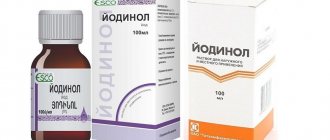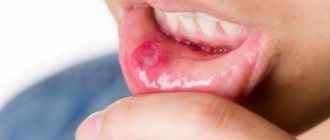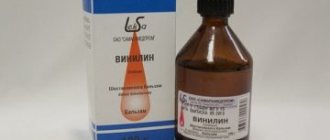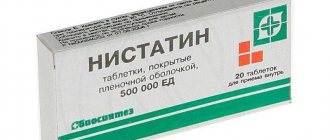What is a disease
Stomatitis is considered a lesion of the oral mucosa.
The reasons for the development of this pathology are:
- infection by infections (viruses, bacteria, fungi);
- medicines;
- autoimmune processes.
Children develop painful ulcers in their mouths. They are quite deep, but heal without scarring. If the baby has immune disorders, then the ulcerative process is continuous. Previously formed ulcers simply do not have time to heal before new ones appear. The acute process becomes chronic. That is why it is important that nutrition for stomatitis is gentle, at the same time complete and varied.
Treatment methods
Due to the fact that the etiology of each type of stomatitis is different, the approaches to treatment are also different. For example, a fungus needs to be fought with an antifungal drug, herpes with an antiherpes drug, allergies with an antihistamine, etc. Therefore, the main task of a doctor is to diagnose stomatitis, identify the cause of the disease and prescribe appropriate treatment. Therapy is carried out in two directions: relief of general symptoms and local effects on mucosal lesions. As a rule, the doctor prescribes medications and antiseptic treatment of the oral cavity in the form of applications and rinses.
General diet rules
A special feature of the diet for this oral disease should be food that is as neutral as possible and does not irritate the mucous membranes. It should be well crushed and have an enveloping and slimy consistency.
When organizing meals for a baby with this disease:
- It is necessary to adhere to small, frequent meals. Portions should be small, and the frequency of intake should be five or six times a day. It will be easier for the baby to eat a small portion, and it will be easier for parents to feed him.
- All food should be crushed as much as possible, and the consistency should resemble puree. Meat and fish are used only in the form of minced meat. The temperature of the food should not be higher than forty degrees, neither hot nor cold.
- Before eating, you can treat the child’s oral mucosa with products containing painkillers. You can use: Kamistad, Kalgel, Cholisal. Also, for pain relief before eating, you can give your baby Ibuprofen or Paracetamol. They will numb the mucous membrane in the mouth. You can safely feed your baby.
- After eating, be sure to rinse your mouth with water at room temperature. Then the mucous membrane is treated. For this, any disinfectant solutions are used (Furacillin, Chlorhexidine, Stomatofit, Miramistin). To do this, you can use decoctions of chamomile or sage herbs. This is done in order to disinfect the lesions and prevent the development of a secondary infectious process.
- It is necessary to apply oils to the mucous membrane that have the ability to activate reparation (recovery) processes.
It is impossible to cope with the disease with diet alone; it must be treated.
Authorized Products
The diet for stomatitis in children includes certain foods that do not irritate the oral mucosa.
Proper nutrition includes:
- Vegetables (boiled, baked, steamed) - dishes made from them do not injure, do not irritate, and at the same time provide the body with vitamins and minerals. It is recommended to take vegetables with a delicate structure (broccoli, zucchini, potatoes, pumpkin).
- Fermented milk drinks and products should definitely be included in the child’s diet, but they should not contain a lot of acid. It is worth giving preference to soft neutral cottage cheese, Varenets, and fermented baked milk.
- Cereals - they are used to prepare porridges. They have an enveloping effect. They provide the body with B vitamins. The cereal must be well boiled.
- Fruits – usually choose moderately sweet, neutral, non-acidic fruits. It is better to take bananas, watermelons, melons, crumbly sweet varieties of apples and pears.
- Fish dishes - for their preparation, it is advisable to use fatty varieties of sea fish. To prepare either minced fish or steam it, remove all the bones so that the baby cannot injure the oral mucosa. Fish is a source of easily digestible protein, vitamins, microelements and polyunsaturated fatty acids.
- Meat dishes - only soft, lean types (veal, rabbit, chicken, turkey) are used to prepare them. When cooking, it is better to prepare minced meat products. Steam them or bake them in the oven. You can cook: soufflé, cutlets, meatballs.
- Liver - it can sometimes replace meat dishes; it is also better for preparing cutlets, soufflés, pates and similar dishes.
- Casseroles - can be prepared from vegetables, cereals, pasta, cottage cheese.
- Soups and broths – puree soups and low-fat broths are widely used in dietary nutrition.
- Soft cheeses are a good source of calcium. It is high in calories, easily digestible, and nutritious.
- Dried fruit compotes and jelly are a source of vitamins and microelements. It is better to replace tea with these drinks.
- Juices must be natural, freshly squeezed. To do this, it is better to take non-acidic fruits and vegetables (pears, apples, carrots).
The use of these products in a diet for stomatitis will make the diet high in calories and nutritious, at the same time gentle.
Methods for preventing stomatitis
- Preventative visits to the dentist (twice a year), if necessary, dental treatment
- Strengthening the immune system (regime, good nutrition, hardening)
- Maintaining oral hygiene
- Getting rid of bad habits (finger sucking, toys, pencils, etc.)
- Maintaining household hygiene (thorough cleaning of premises, washing toys)
- Timely treatment of gastrointestinal diseases
The dental network offers services for the treatment of stomatitis in children. Our specialists are highly qualified and regularly improve their skills in leading clinics in Russia and Europe. The pediatric dentist will diagnose and prescribe effective treatment. We have a system of family and cumulative discounts.
You can contact any of the branches of our center in Moscow within walking distance from metro stations:
- Art. Alekseevskaya (VDNKh district, etc. Mira), address: st. 3rd Mytishchiskaya house 3, building 2;
- Art. Shelepikha, address: Shelepikhinskaya embankment, address: building 34, building 1.
Stomatitis is a serious disease; do not expect that it will go away on its own without consequences. Remember that your child's health depends only on you. If you notice the symptoms described in the article, sign up for “Smile” dentistry and get qualified help. We are waiting for you every day without breaks and weekends.
Sample menu for the day
A sample menu is presented to help you understand what to feed your baby.
| Eating | Dishes |
| Breakfast | 1. Sweet oatmeal with milk and butter.2. Raspberry jelly. |
| Lunch | 1. Curd casserole with jam.2. Rose hip decoction. |
| Dinner | 1. Potato puree soup with meat broth.2. Steamed fish cutlet with zucchini puree.3. Dried fruits compote. |
| Afternoon snack | 1. Pudding with fruit puree |
| Dinner | 2. Chicken soufflé with stewed cabbage.3. A glass of Varentz. |
Food should be varied, dishes should not be repeated for at least seven days. Its task is not only to nourish the child in a gentle manner during the period of exacerbation of stomatitis, it should help strengthen the immune system and the body’s defenses.
How to get rid of stomatitis
07.12.2021
Stomatitis is a lesion of the oral . While scientists are thinking about the mechanism of its occurrence, one thing is clear: stomatitis causes obvious discomfort and one must be able to get rid of it - quickly and effectively.
Stomatitis: causes and symptoms
on the oral - on the gums, tongue, inside of the cheeks and lips. In this case, the mucous membrane swells, turns red, and becomes covered with plaque. There is increased salivation, bleeding gums, pain, and discomfort when eating. The mechanism of the disease is not fully understood; it is assumed that the immune system to irritants. The causes of stomatitis can be: poor hygiene, viral infection, concomitant diseases (gastrointestinal diseases, the presence of worms, HIV , endocrine disorders), mechanical or thermal damage, lack of vitamins and minerals.
Diagnosis of the disease does not involve laboratory and technical research - the doctor is guided by the results of a visual examination: the appearance of the ulcers, the presence or absence of other complaints and symptoms.
Treatment of stomatitis
Stomatitis can be caused by viruses, bacteria or fungi. Treatment procedures and remedies depend on this. Depending on the damaging factors, treatment is carried out with antifungal, antiviral, antihistamine drugs, and the underlying diseases are treated. If there are none, specific treatment is not applied. In all cases you can use:
- Immunomodulators - to increase the body's defenses: immunal, anaferon, echinacea, etc.
- Painkillers are better for topical use, in the form of ointments, gels, aerosols. For fever and worsening general condition, use non-steroidal anti-inflammatory drugs with analgesic and antipyretic properties.
- Antiseptics - solutions, ointments or aerosols: Miramistin, Hexoral, Ingalipt, Orasept, Stomatofit, Stomatidine, Metrogil-denta and many others.
- Wound healing agents - solcoseryl (ointment), carotolin (oil solution), chlorophyllipt (spray and lozenges), vinylin (balm) and others.
- In severe cases, use antibiotics together with probiotics and vitamins. The most effective: gentamicin, ofloxacin, augmentin and others.
Oral hygiene
Uncomplicated stomatitis resolves within a week when rinsing or treating the mouth with disinfectants. For hygiene, the following measures are taken.
- Anti-inflammatory and antiseptic lotions and compresses . To do this, use: aloe leaf - cut and apply to the sores; fresh plantain - extract the juice and wipe the mucous membrane; lingonberry juice - apply a napkin soaked in juice; red beets - use raw pulp; garlic brewed in black tea - attach a soaked napkin; propolis - infuse with alcohol and apply moistened cotton pads or apply with a toothbrush; honey with sea salt - make applications.
- Rinsing the mouth with the following means: St. John's wort - a decoction of the herb relieves inflammation and swelling ; Kalanchoe - juice or decoction of leaves is used; Potentilla – root tincture has medicinal properties; oak bark, chamomile, thyme, calendula, sage - a decoction of herbs; salt solution - sea or regular; a mixture of soda, peroxide and lemon juice - for cleaning.
- Using standard mouth rinses .
- Use of special toothpastes recommended by dentists.
How not to get sick
Since the causes of the disease are not fully understood, there is no specific answer to this question. However, it has been established that a decrease in immunity due to various accompanying circumstances plays an important role. For prevention you should:
- observe the rules of oral hygiene , if necessary, have sanitation at the dentist
- disinfect dishes, toothbrushes and other personal hygiene items
- Contact your dentist to clean tartar and enamel
- quit smoking and alcohol abuse
- strengthen the general condition of the body, preventing the development of chronic diseases
- eat right, consume the right amount of calcium and other minerals, take vitamins if necessary
- avoid foods rich in carbohydrates, which create a favorable environment for bacterial growth, increase the amount of dairy products
- choose a suitable toothbrush that is hard enough but does not damage the gums
When treating stomatitis, keep in mind that it can be a manifestation of other, more serious diseases. Despite the undeniable benefits of the listed remedies, if the disease does not go away within a week, be sure to consult a doctor . And the best protection against any disease is a healthy lifestyle and strengthening the immune system .
Published in Dentistry Premium Clinic










